Video game crowdfund campaigns can be a powerful way for indie game designers to secure the finance they need to develop and publish their games.
Over the years, we’ve seen hundreds of successful video game crowdfunding stories: Hollow Knight, Psychonauts 2, Superhot, the list goes on and on.
For every Shenmue III, however, there’s a Mighty No. 9. Don't be like Mighty No. 9.
So how do you make sure that your video game crowdfund is a success, and what pitfalls do you need to avoid?
This article covers:
- Is crowdfunding a good fit for your game?
- Which crowdfunding platform should you use?
- How to create a successful video game crowdfunding campaign
- What happens after your crowdfund ends

Mighty No. 9, developed by Comcept
Is crowdfunding a good fit for your game?
On the face of it, crowdfunding seems like a great idea: anyone can launch a Kickstarter campaign, and for many indie devs, the funds raised in a crowdfund can prove invaluable.
The unfortunate reality is that not every game suits the crowdfunding landscape. Many of the most successful video game crowdfunds either:
- Had a famous name behind them (like Peter Molyneux’s Godus)
- Were based on nostalgic series or genres (such as Bloodstained: Ritual of the Night, which harkened back to classic Castlevania)
- Or boasted a unique concept (like Superhot’s time-bending FPS gameplay).
If none of these advantages apply to your game, don’t fret too much. Crowdfunds are as much a PR campaign as they are a quest for funding.
A well-received crowdfund campaign could get you noticed by a major publisher, cultivate a wider community to support your project long after your campaign closes, or act as an acid test for your game’s concept, themes, and gameplay.
You’ll learn some important lessons along the way, and even if you don’t meet your crowdfund target, you may come away with something equally as valuable.
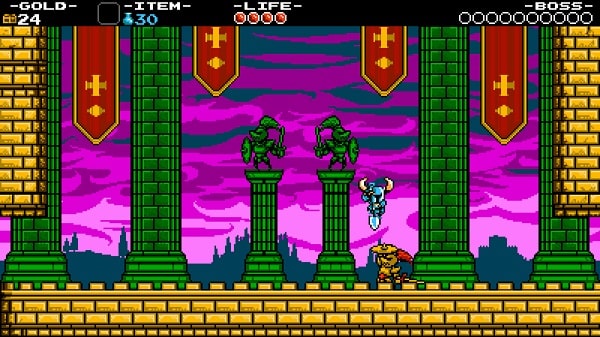
Shovel Knight, developed by Yacht Club Games
Which crowdfunding platform should you use?
The three major video game crowdfunding platforms you need to be aware of are Kickstarter, Indiegogo, and Fig.
Kickstarter
Kickstarter has raised over $1.4bn for over 65,000 gaming projects since its inception in 2009. Some of the biggest indie video game crowdfunds of all time have found success on the platform, including Yooka-Laylee and Shovel Knight.
40% of all video game crowdfunds that are run on Kickstarter ultimately reach their investment target, and given Kickstarter’s reputation as a premier gaming crowdfund platform, their vast and active audience is almost perfect for indie game devs.
With so many successful video game crowdfunding campaigns under their belts, the Kickstarter brand has a reputation of featuring games with quality and potential.
Kickstarter is an 'all-or-nothing' crowdfunding platform: if your project doesn’t achieve its goal, you don’t get any of the money that your backers pledged.
Kickstarter will take a 5% cut from whatever money you successfully raise as a platform fee. Their payment provider, Stripe, will also take somewhere between 3-5% as a processing fee.
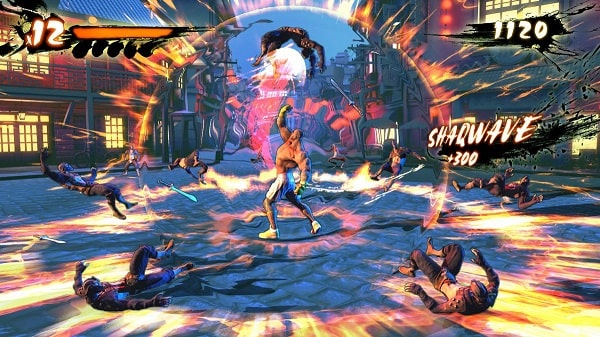
Shaq-Fu: A Legend Reborn, developed by Big Deez Productions
Indiegogo
Next up are Indiegogo, the crowdfunding platform that gave us Factorio and Shaq-Fu: A Legend Reborn (don’t lie, you wanted that sequel as much as we did).
Indiegogo’s biggest selling point is that, unlike Kickstarter, you get to keep whatever funds your crowdfund raises, whether you end up hitting your target or not.
Indiegogo also takes a 5% cut when your campaign closes, and Stripe will take their aforementioned 3-5% processing fee (this fee may vary, depending on your currency).
Outer Wilds, developed by Mobius Digital
Fig
Last but not least, we have Fig.co, home to such video game crowdfund successes as Psychonauts 2 and Outer Wilds.
Unlike Indiegogo and Kickstarter, Fig operates under a mixed model, allowing both consumers and investors to put money toward a project. Consumers can simply support them and reap the backer benefits, whereas investors get a cut of the revenue when the game releases.
Fig also curates their crowdfund requests, meaning that, unlike Indiegogo, only approved campaigns will appear on their website.
You’ll have to work a little harder to get your campaign published, but that extra layer of quality control offers a greater sense of trust and security to potential backers interested in supporting your game.
Fig boasts an Open Access crowdfunding model, which allows you to carry on accepting donations after your campaign closes, as well as a Finishing Fund program, which helps games that complete successful crowdfunds pass through the final stages of development.
You don’t need to pay Fig any platform fees, but much like Kickstarter and Indiegogo, there’s a processing fee of around 2.5%.
Fig is an all-or-nothing crowdfunding platform. You either hit your target, or you leave with nothing.
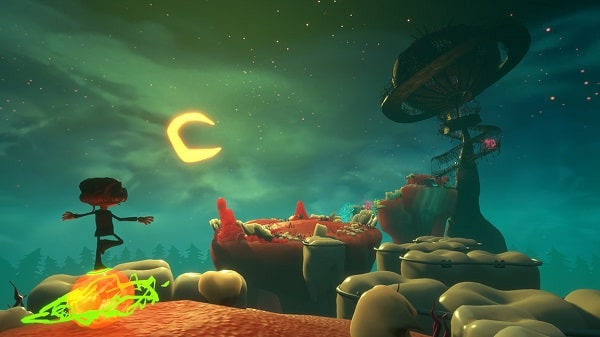
Psychonauts 2, developed by Double Fine
How to create a successful video game crowdfunding campaign
Now you’ve decided which platform is best for you, let's start planning your crowdfunding campaign, with the support of a few indie game devs who have already been there and done that!Prepare your assets
Heading into a video game crowdfund, you need to be sure that all of your promotional work is ready to share, and that your game is in a playable state - even if it’s only half complete.Simon Filip, who used GameMaker to build his action-platformer Flynn: Son of Crimson, raised $63,218 of his $40k Kickstarter goal, and offers three key areas of advice:
- 'If you think you're just about ready, spend another month preparing more content for your campaign updates.'
- 'The trailer is likely the first thing that potential backers are going to see, so make sure it grabs their attention immediately.'
- 'Don't have a slow 30-second intro to your trailer; jump straight into your gameplay and show off your best features from the start. Saving big moments for the end is fine, but not if you sacrifice excitement throughout the entire video.'
Oscar Brittain, whose hoverbike racing RPG Desert Child raised $14,427 AUD, also extolled the virtues of preparation: 'I think having a snappy trailer with close-to-final art assets was important.
'I created a lot of art just for the Kickstarter, like headings, animated icons for each reward tier, etc. I feel that showing your commitment to presentation makes people value your project more highly.'
Daniel Hindes, whose stealth platformer Wildfire made over double its original $10k crowdfund target, similarly stressed the importance of an eye-catching presentation.
'Pay a professional artist to make great key artwork for you,' he advised. 'This is the first thing people will see when they find your campaign, and you want that art to capture them so that they stay to find out more.'
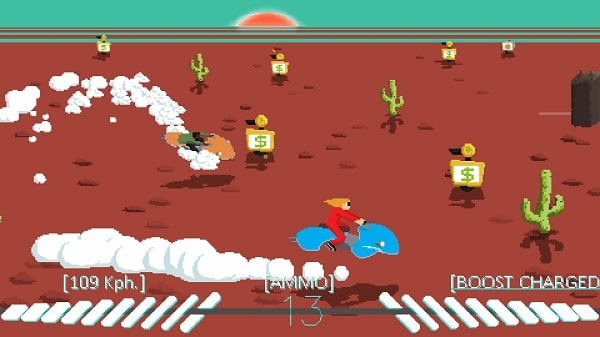
Desert Child, available on Steam, Xbox, PlayStation, Nintendo Switch
Set your crowdfund target
Depending on your crowdfunding platform, your entire campaign could be made or broken by the target you set yourself.
It’s important to set a target that you know you can reach, and to have a set plan for what you’d spend the money on. No-one’s going to want to contribute to your campaign if it’s not clear where their money’s going, and asking for $10k in funds but promising $20k’s worth of work (or vice versa for that matter) is a quick and easy way of ruining your reputation.
Set stretch goals
Your target should always be your baseline: the minimum amount you need to do all the things you tell your backers you're going to do. Stretch goals, on the other hand, can afford to be a little more aspirational.
Consider stretch goals like a wishlist of additions to your game that can be achieved if higher targets are met. For example, you could set a target of $10k to complete the final five levels of your game, but if you reach your stretch goal of $15k, you could use the extra capital to add three time trial stages.
As with your crowdfund target, you need to be sure that your stretch goals are viable and don’t impact the original intention of your campaign. That’s the trap that Mighty No. 9 fell into, among other controversies: the team kept offering more and more audacious stretch goals that either couldn’t be achieved, or that continually delayed the release of the game.
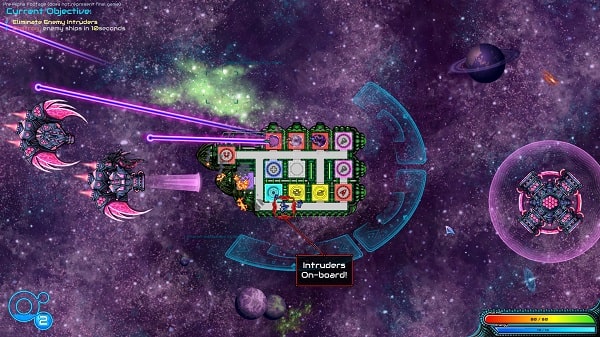
Undercrewed, available on Steam
Engage with your community
According to Kickstater statistics, if your campaign achieves 20% of its target within 48 hours, it ultimately ends up getting fully funded. That’s why a solid crowdfunding campaign needs to be intensely micro-managed with a steady stream of updates and social media posts for the duration of the campaign.
Having all of your assets ready to go before launch allows you to create a campaign that looks fresh, vibrant, and active from start to finish, and helps maintain the excitement and discussion amongst your backers and the wider gaming community.
'Running a Kickstarter campaign was like a full-time job,' said Brittain. 'It's like having a newborn baby; you have to tend to it constantly, even throughout the night.'
'Update [your campaign] every second day. Have a reserve of art assets, music tracks, videos - anything you can put out there to make people want to get excited.'
David Strachan, whose online co-op game Undercrewed made $6,685, believes it was community engagement that gave his campaign the attention it needed.
'I spent a lot of time engaging with communities that I thought were likely to enjoy the game; sci-fi forums, local co-op Subreddits, multiplayer Facebook groups, co-op websites, other space games.'
'I think a lot of people underestimate the amount of work it takes,' he said.
Filip agreed that when it comes to Kickstarter campaigns, more is better. 'Don't go more than two days without an update with fresh content and insight on your team and future plans, it can only help continue to get it out in front of new faces.'
Don’t forget your fellow crowdfunders
You’re not alone in your crowdfunding efforts: 'The best promotion I got was through trading shout-outs with other Kickstarter campaigns,' Brittain noted.
Strachan found speaking to other indie devs running Kickstarter campaigns to be a tremendous source of emotional support. 'When it looked like it would be successful people would send me messages to say how exciting it was. When the campaign wasn’t great, I had to contact people to run ideas past them.
'If you drop someone a message when their campaign is unhealthy, they’re not going to be annoyed at you. And they’re around to bounce ideas off of.'
Another GameMaker developer we spoke to, Johan Vinet, whose side-scrolling sci-fi adventure Lunark raised $81,655 CAD, and found that other indie devs on Kickstarter were a huge help in launching what turned out to be a very successful campaign.
'Asking for help and being humble was good as it helped me in preparing my campaign, as well as building a network in the community,' he said.
'This ended up being a helpful resource when it came to spreading the news or providing me with some (very appreciated) moral support at the lowest points of the campaign.'
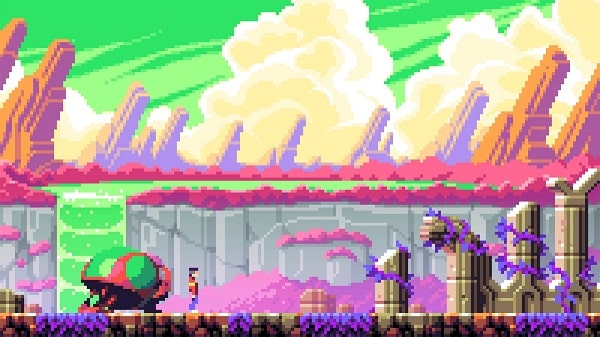
Lunark, available on Steam
Offer rewards to early adopters
Offering special rewards to your backers is a great way of incentivising people to support your crowdfunding campaign. These can range from early access to the full release, special in-game skins, posters, artbooks, and more.
'I think physical rewards are a great way to build a fanbase,' said Brittain.
'Better than physical rewards were the tiers where I collaborated on a game with the backer. This was a $1,000 tier, and three people backed it. I would really recommend doing something like this.'
He added, however: 'Don't offer physical rewards that need large batches made. Even if you get a lot of backers, you might find that the item can only be ordered in batches of say 50, leaving you with a tonne of surplus.'
Filip has a somewhat mixed response to his experience shipping physical rewards for Flynn. 'We offered shirts and posters. With all the work and costs it took in getting them made plus shipping, they weren't necessarily worth it financially,' he said.
'Though if we were to do another campaign someday I'd do it all again just to see our game's merch going all around the world!'
Vinet opted to limit his physical rewards to a postcard, sent to hundreds of backers. 'If you're alone like me (or a really small team), or asking for less than $100K, I'd be really careful and would avoid physical rewards as much as possible,' he said.
'If you're transparent about your decision not to go with physical rewards, people will understand (and your honesty will payout and increase your 'trust factor').
'Backers are willing to help anyway, but they do need an excuse to give you their money. It's up to you to be creative and find other incentives.'
The pros and cons of demos
If you plan to offer a gameplay demo, you need to be sure that it accurately reflects your game, plays well, and adds to your campaign, rather than detracting from it.
When it came to offering a playable demo, those we asked had different approaches. Daniel Hindes credited Wildfire’s crowdfunding success to its demo, which was available at launch.
'We had a playable demo available as the first item on the campaign page. This made the project seem more viable and tangible than those who only launch with concept art or very high funding targets,' he said.
'Numerous former AAA developers have made this mistake and failed despite their reputations, so it's not just a consideration for indie developers.'
Vinet decided against releasing a demo: 'I had a demo and asked some friends if they thought it would help the campaign. Considering the feedback, I decided not to make it available because it was not representative enough of the game and could have hurt the campaign more than anything.'
Strachan didn’t release a demo for Undercrewed, but wishes he had: 'I didn't have a demo and I massively regret this. Lots of the press and streamers are geared up for getting press copies and posting articles/reviews to coincide with your campaign.'

Flynn: Son of Crimson, available on Steam, Xbox, PlayStation, Nintendo Switch
Crowdfunding is a marathon, not a sprint
Gaming crowdfund campaigns slow down significantly in the middle, really only booming during the first and last few days of their runtime.
'Don't cancel your campaign because you're at 50% with only five days to go,' Brittain said. His campaign made the bulk of its money in the final two days. 'People wait until the last 48 hours to get a notification and back projects.'
Strachan added: 'During my campaign, I had periods where I was seriously worried it wouldn’t get funded. However, near the end, I had some streamers and articles get released just in time to swoop in and save the day.'
What to do if your crowdfund fails
If your crowdfund doesn’t meet its goal, it’s not a death knell for your game, or your time as an indie game developer.
The lessons you learn from unsuccessful crowdfunding campaigns can help improve your game and come back stronger with a future campaign.
Filip admitted that his previous Kickstarter campaign, launched for another project, didn’t meet its goal: 'With our failed campaign in the past, we were so excited with sharing the concept that we didn't create enough gameplay content, too much time was spent on concept environment art,' he said.
His next crowdfund campaign made 158% of its goal.
'The best thing you can do is really just focus on showing that your game is simply a game, and not a load of concept art and hopeful promises for what it could become.'
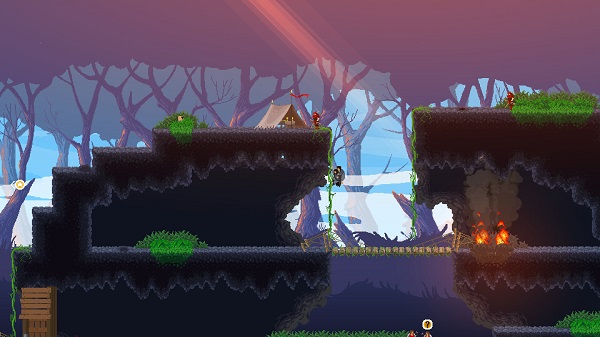
Wildfire, available on Steam, Xbox, PlayStation, Nintendo Switch
What happens after your crowdfund ends
The end of a successful crowdfund is a time for celebration. All the hard work has paid off, and with your financing secure, you now have the money to achieve the goals and targets you outlined in your campaign.
In many ways, this is where the hard work really begins.
There’s also the small matter of the legions of backers who will now be looking forward to seeing what you do with your new-found riches. Communication is absolutely key from here on out: your backers deserve, and will rightfully expect, updates on your progress and the rewards they were promised during your campaign.
Honesty, humility, and transparency are the keys to maintaining a good relationship with your backers post-crowdfund. They should be the first to hear announcements, to be asked for feedback, receive updates on their rewards, and receive the final product.
A successful video game crowdfund comes down to a mix of preparation, community engagement, and realistic expectations.
There’s no 'one size fits all' crowdfund solution. You’ll need to build a campaign that’s proportionate to your game, doesn’t over-promise or under-deliver, demonstrates the passion you have for your project, and proves to your community that what you’re proposing is more than just a proof of concept.
It will be busy. It will be stressful. But you’re not alone, and there’s plenty that can be learned from even a failed campaign.



